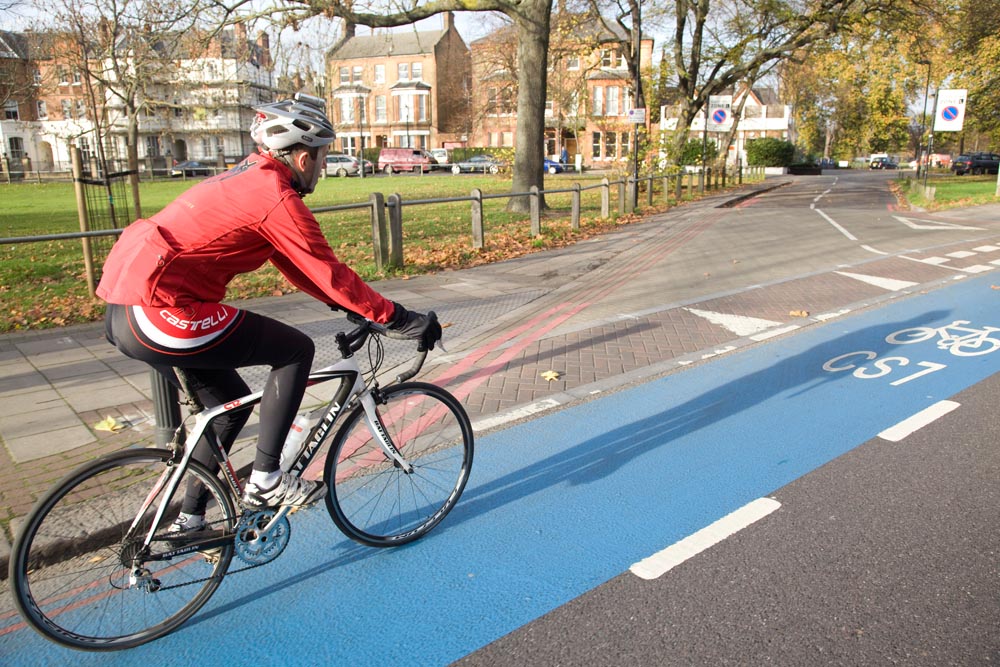New study says cycling 30 miles per week cuts heart disease and cancer risk in half
The study says that commuting to work by bike can significantly cut the risk of conditions like heart disease and cancer

A new, long term study conducted by the University of Glasgow has determined that commuting by bike to work can cut the risk of developing heart disease and cancer nearly in half.
The study, published in the British Medical Journal and conducted over the last five years, also analyzed walking, but determined that individuals who cycle see greater benefits because of the longer distances covered and the intensity of riding a bicycle versus walking.
>>> Nine reasons why commuting by bike is surprisingly brilliant
264,337 people took part and researches found cyclists actually had a 41 per cent lower risk of premature death from in comparison to those who regularly travel to work via a vehicle. On top of that, the avid riders in the study had a 46 per cent lower risk of cardiovascular disease and a 45 per cent lower risk of developing cancer.
>>> Benefits of cycling: reasons to get on your bike
Researchers from the University of Glasgow believe that these results suggest that city and regional planning policies aimed to allow more accessible bike routes are great opportunities for the improvement of public health.
“Cycling all or part of the way to work was associated with substantially lower risk of adverse health outcomes. Those who cycled the full length of their commute had an over 40 per cent lower risk of heart disease, cancer and overall mortality over the five years of follow-up,” said Dr. Jason Gill of the Institute of Cardiovascular and Medical Sciences.
Get The Leadout Newsletter
The latest race content, interviews, features, reviews and expert buying guides, direct to your inbox!
In the wake of this study, experts are calling for more cycling lanes, bikes shares and other elements to encourage communities to start riding more.
“Commuting to work by walking, or better still, cycling, is a great way to combine physical activity into your normal daily routine,” said Dr. Mike Knapton, associate medical director at the British Heart Foundation. “It is paramount to make physical activity easier and more accessible if we are to reduce the burden of ill health caused by inactivity.
“Local authorities and workplaces should support this by making using active transport as a means to get to work an easy option,” he continued.
The paper titled, “Association between active commuting (walking and cycling) and incident cardiovascular disease, cancer and mortality: Prospective cohort study of 264,337 UK Biobank participants” can be read in full on the BMJ website here.

Thank you for reading 20 articles this month* Join now for unlimited access
Enjoy your first month for just £1 / $1 / €1
*Read 5 free articles per month without a subscription

Join now for unlimited access
Try first month for just £1 / $1 / €1
-
 "Like a second skin” - the WYN Republic CdA triathlon suit reviewed
"Like a second skin” - the WYN Republic CdA triathlon suit reviewed$700 is a substantial investment in a Tri Suit, and it is, but you’ll definitely feel fast in it
By Kristin Jenny
-
 What does Q36.5 mean? We asked the people behind the Italian kit brand that sponsors Tom Pidcock's team
What does Q36.5 mean? We asked the people behind the Italian kit brand that sponsors Tom Pidcock's teamQ36.5's Luigi Bergamo and Lodovico Pignatti Morano take on Cycling Weekly's Q&A
By Tom Thewlis